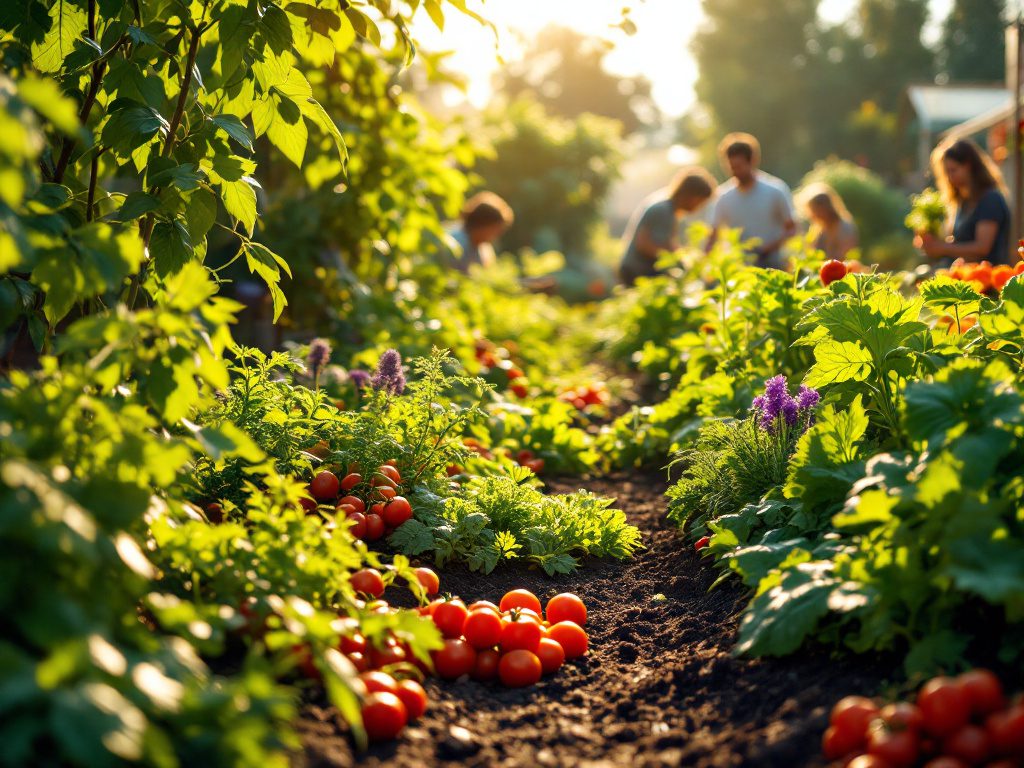Grassroots Gardening Takes Root Across America
Imagine the gentle hum of conversation, hands deep in the dirt, the scent of tomato plants mingling with laughter. This isn’t just a vision plucked from an urban farming documentary—it’s happening in real time across American neighborhoods. As the days stretch longer and the soil warms, a surge of community gardening events and rental programs is unfolding from New Jersey to North Dakota and beyond.
In Buffalo, the joy of gardening stretches beyond the backyard. The annual Groundwork Market Garden Plant Sale & Giveaway, now in its fifth year, returns on May 10th with a simple promise: every household can take home two free organic vegetable seedlings, democratizing access to fresh, healthy food. The results speak volumes. Organizers report that last year’s effort saw over 2,000 free seedlings distributed—sowing the potential for 12,000 pounds of homegrown produce, much of it ending up on the tables of families who may otherwise face food insecurity.
Fargo, North Dakota’s Yunker Farm Park is following a similar script. More than 200 plots—each a generous 20 by 30 feet—are available for just $20 apiece, an affordable escape for aspiring gardeners. The rental event on May 5th is a testament to the growing appetite for urban agriculture and a bold stand against the commercial food system’s indifference toward local resilience and nutritional equity.
An Antidote to Food Insecurity and Disconnection
Why does this growing movement matter? According to the non-profit Feeding America, nearly 34 million Americans—including 9 million children—face food insecurity. Community gardens offer more than kale and carrots: they provide dignity and empowerment. When a neighborhood gathers to till the earth, it’s about nourishment in the broadest sense—health, social connection, and self-reliance. Experts like Dr. Jill Litt, a professor of Environmental Health at the University of Colorado, argue that “community gardening isn’t just about produce; it cultivates belonging, pride, and hope.”
Conservative policies, which often emphasize individualism over collective solutions, miss the mark when it comes to these broad societal needs. The evidence is unambiguous: community-based initiatives thrive where government and local partnerships lend support—not when they are left solely to market forces or privatized philanthropy. The programs springing up in places like Brick Township, New Jersey, make this clear. There, for just $20 per season, residents—including those with mobility challenges thanks to ADA-accessible beds—are invited to nurture their own veggies or flowers, fostering inclusive engagement. These aren’t handouts; they’re hand-ups, and the difference matters.
“Community gardening isn’t just about produce; it cultivates belonging, pride, and hope.” —Dr. Jill Litt, University of Colorado
Across the country, obstacles remain palpable. Disparities in who has access to green spaces, high startup costs for personal gardens, and the waning appeal of agriculture among younger generations all challenge progress. Yet by banding together, towns like Fargo and organizations like Groundwork in Buffalo are chipping away at these barriers, showing how true progress comes from collective action, not just rugged individualism.
Beyond the Soil: Building Community, Climate Resilience, and Joy
Step into the Gainan’s Heights Garden Party in Billings, Montana, and you’ll find more than just flowers and discounted ceramic pots. The annual event fuses accessible gardening with entertainment and outreach—door prizes, garden design consultations, even cross-promotion with a local brewery—all in service of knitting neighbors together. It’s an illustration of how gardening can transform not just landscapes, but relationships and sense of place.
North Carolina’s Brassard Greenhouses is taking a creative approach, launching a pottery program for gardeners “who struggle with using planters.” For those unsure how to start, staff members plant customer selections in just the right vessels and return them when the weather’s right—making gardening accessible for people with limited time, tools, or experience. During a time when inflation and supply chain glitches have meant rising prices for basic goods, Brassard’s decision to freeze prices in 2024 is a small, radical act. It stands in sharp contrast to conservative commentators who deride such price interventions as “market distortions.” Here, progressives see a demonstration of community-minded business leadership.
Climate action, healthier diets, mental well-being—community gardens touch all these fronts. Studies by the CDC and American Community Gardening Association tie participation in shared gardens to reductions in stress, higher fruit and vegetable intake, even improved academic outcomes among children. It’s a pragmatic, people-first solution—a reminder that when we come together to plant seeds, we harvest more than food.
Where is this movement headed next? Recent polling by Pew Research shows growing bipartisan public support for local food systems and green spaces, yet political obstacles remain as some lawmakers seek to cut or privatize urban agriculture funding. Progressives know the answer isn’t less support—but more: more investment, more inclusion, more vision for neighborhoods where everyone can share in nature’s abundance.
What Grows When We Garden Together?
Every spring, Americans are reminded that beneath our differences is a shared longing for connection—with each other, with the land, with hope for the next generation. This new season of community gardening events isn’t just a trend; it’s a counter-narrative to divisive policies, a movement rooted in sustainable abundance and social justice. The real harvest isn’t just what grows in the ground—but what grows among us, as neighbors join hands to build something lasting and beautiful together.

